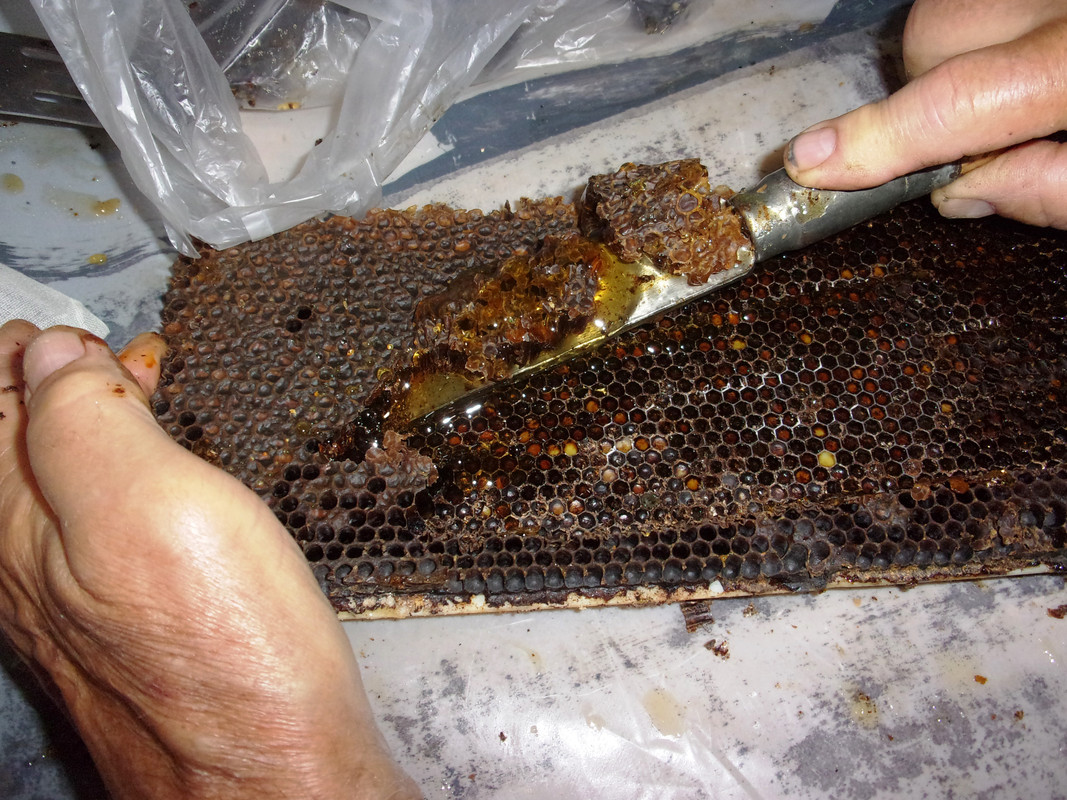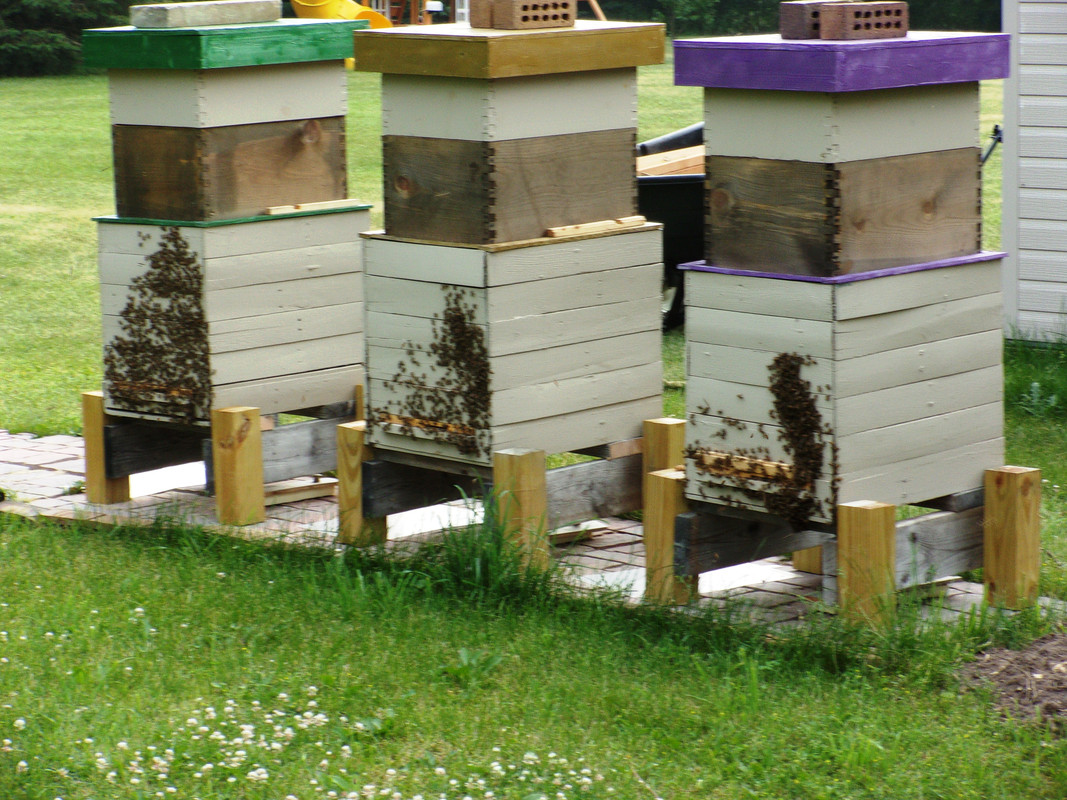We did beecheck #8 and today #9, removed two deep 8 frame boxes, full of capped honey, some uncapped nectar, storing it in the empty fridge in the basement until we spin it out. (probably August 1st or later) The hives are FULL of bees, not just the frames drawn out in wax, capped brood, hatching brood, but the population is crazy in each hive. I didn't count them, something like 50-80,000 per hive, standing thick in not only the long hive boxes but in the deeps and supers on both sides of the frames. The whole process of population explosion is invisible to us, we see it for 1 hour once a week and now they are looking amazing.
Our neighbor Zach helped us again this beecheck and he even brushed bees off of frames so we could bring them in. It was a really calm beecheck, the rain was just starting and the bees don't fly in rain, so they didn't create clouds of bees around us. I didn't suit up and they didn't get agitated. Right now there is one hive with a deep and super, the other two have 2 supers on top of the hives. Soon we'll remove the last deep and put on another super. The deep full of honey, mr bliss said weighed 70ish lbs on his estimation.
With the populations so high, we're contemplating splitting a hive or two, to create more hives, buying queens and hoping they make it through winter. I'm not sure what we'll do yet. None of the hives at this point show any signs of creating new queens or swarming. We may or may not have new hive boxes ready when we need them. We have one extra hive ready on the deck, but we might need 2 or 3. In addition to needing the hives, we'll need to prepare the ground-remove grass, lay down landscape fabric, bricks....and decide where they could go in the yard.
Then on top of the hives we'll need supers-but that can wait until next year and we can build them (boxes and frames) in winter. We'll need honey storage, and I think I have 8 cases of quart jars, so that's more than enough, overkill really.
If I can find some glass, to fit over the top of the roaster, I can melt and filter wax that we are collecting, in the roaster, by making it a solar melter on hot days. Once the honey is uncapped we'll have all those cappings to melt.













